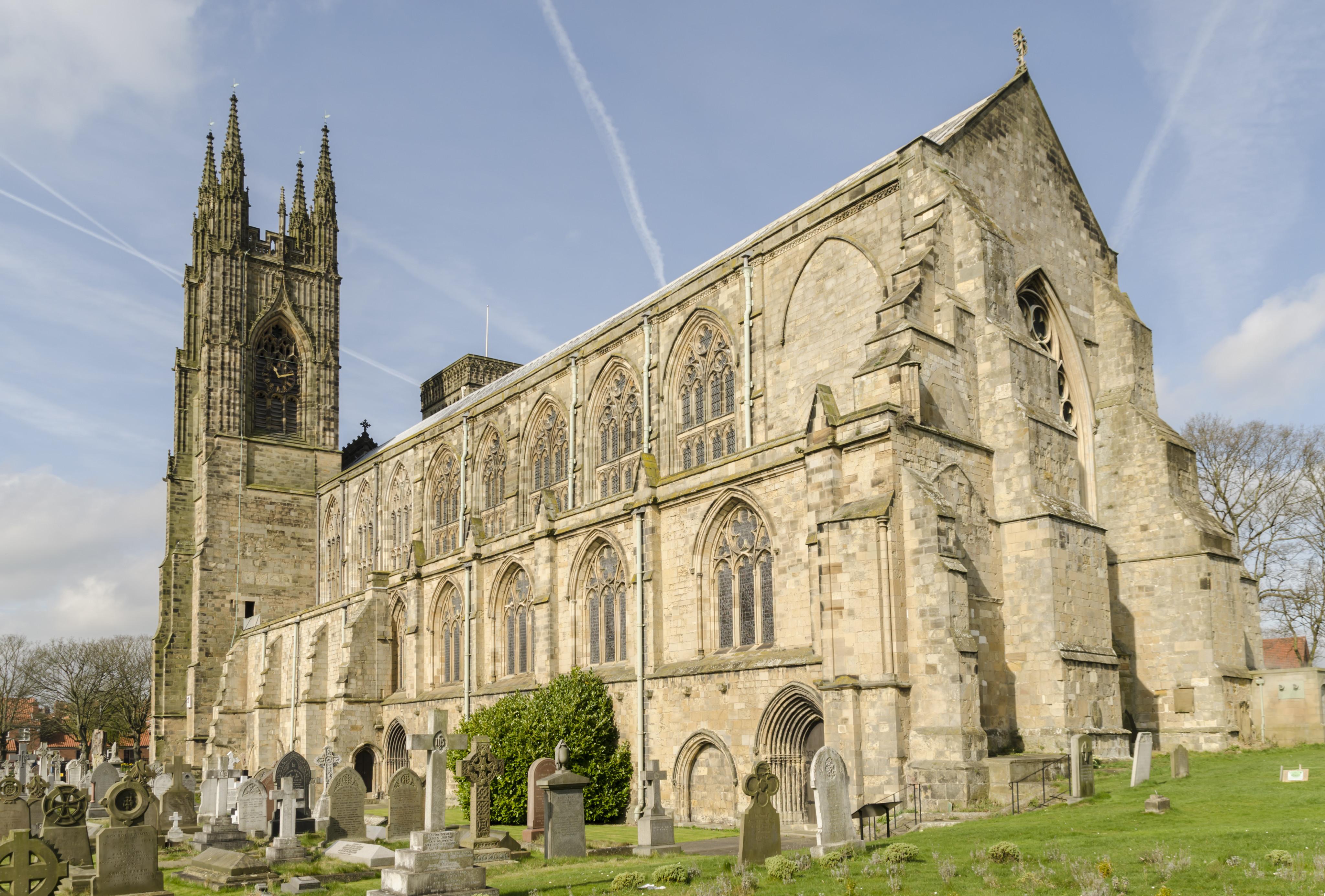St John's Burlington
Bridlington, Yorkshire
The church is grade II listed as a building of special architectural interest and its distinctive exterior is an important landmark in the Old Town of Bridlington.

In the days of its medieval glory, Bridlington Priory was one of the great monastic houses of England.
Bridlington, Yorkshire
The church was more than twice as large as what now remains. The Priory today is a glorious survival of that pre Reformation splendour, now shorn of its great choir which housed the shrine of St John of Bridlington, its transepts and its stately central tower over which soared a stone crown.
There was a church in Bridlington at the time of the Domesday survey in 1086, and it is likely that its site was chosen for the new foundation by the Priory’s founder Walter de Gant. The Order of Augustinian Canons was new to England, so the foundation was amongst the earliest in the country and almost certainly the first in Yorkshire.
The Priory expanded around its church with monastic buildings spread out mainly on the south side of the site, including a chapter house, Priory’s hall, cloister, dormitory and infirmary. All are vanished today.
The Priory acquired lands in many part of Yorkshire and Lincolnshire. Their wealth was expressed in stone when early in the 13th century they began a new church. The Priory became a centre of literary culture through a succession of scholarly inmates. The most illustrious of Bridlington’s priors was John of Thwing, who in 1401 became the last English saint to be created before the Reformation. Under Prior John the Priory attained the height of its medieval sanctity.
With its last Prior, William Wood, the monastery’s final annals were written as high tragedy. Wood was caught up in the Pilgrimage of Grace, sparked off in 1536 by the dissolution of the lesser monasteries. Wood was summoned to London, arrested and accused of giving the rebels aid. He was convicted of treason and hanged at Tyburn. The end of the community followed.
From then until the present day the Priory has been the parish church of St Mary. It has undergone several restorations, the latest completed in the 1990s, and the work of preservation goes on, with a recent successful appeal to raise £600,000 to restore and rebuild the famous 19th century organ. The major change in the church’s appearance since the Reformation was the construction of the upper parts of the two western towers during a 19th century restoration under Gilbert Scott. The towers were built asymmetrically to reflect the contrasting styles of the west front, the northwest tower in the Early English style and its southwest partner in the more ornate perpendicular style.
Bridlington, Yorkshire
The church is grade II listed as a building of special architectural interest and its distinctive exterior is an important landmark in the Old Town of Bridlington.
Flamborough, Yorkshire
St Oswald's is essentially a 12th century church that was extensively rebuilt and restored in Victorian times but still has the chancel arch and font remaining from the original Norman church.
Rudston, Yorkshire
From BC to AD, where quite old meets really quite old, the church and megalith have a history that spans the millennia; come and stand in the shade of living history.